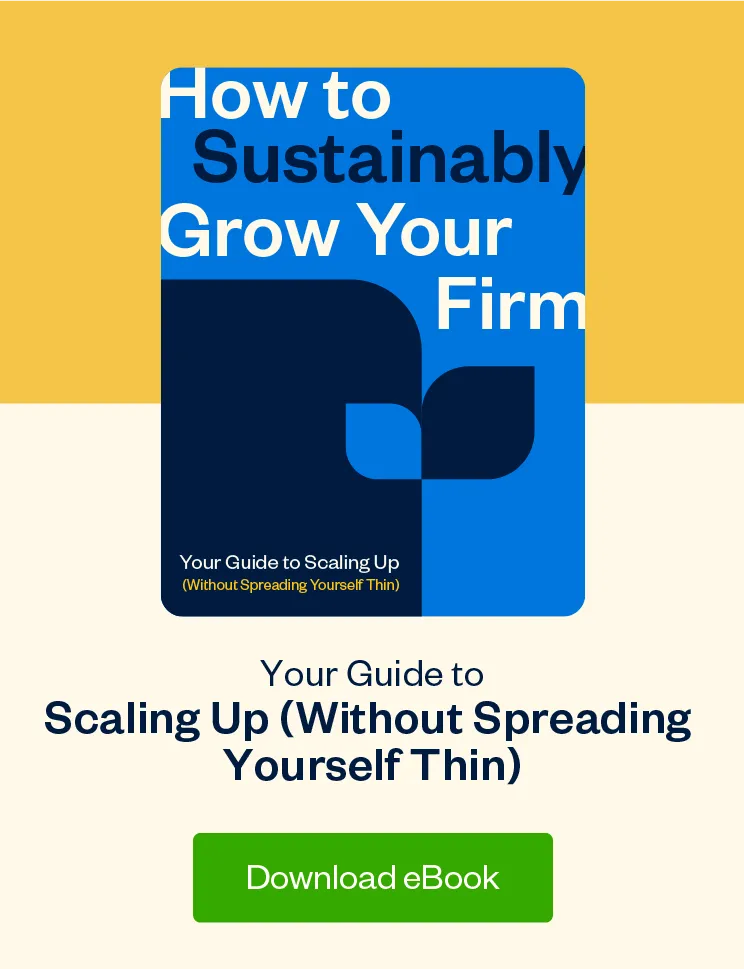A tax season debrief examines what happened (the good and the ugly) this year, leading to actional recommendations to make the next tax season smoother.

Once another tax season is in the rearview mirror, you might be tempted to shift gears and move on to other priorities. Instead, hit the brakes for a moment to do a proactive retrospection (or after-action review) with your clients and/or team leaders. It can yield important lessons that will benefit you and your clients when the busy season rolls around again.
Table of Contents
What’s a Tax Season After-Action Review?
It’s likely you already complete some sort of tax season debrief or postmortem, with active participation from your team, where you discuss key points from the tax season, including mistakes and team performance.
An after-action review (AAR) is also a look back—and a look forward. The focus is on actionable recommendations based on what went right or wrong. The key word here is “action.”
Effective AARs will include the following:
- What you expected to happen vs. what actually happened
- What worked (and why it worked)
- What needs improvement (and why)
Why Does Your Firm Need an After-Action Review?
Does any of the following apply to you and your team?
- You’re filing extensions and making payment calculations
- Clients give you tax documents in JPEG or 1 side of a 2-sided IRS notice
- You learn the client has a new LLC (limited liability company) after you complete the tax return
- Your clients want status updates
- Tax season is hectic
After-action reviews improve team communication and encourage a culture of continuous learning and improvement in your firm.
When you freely discuss what works and doesn’t, you’re not attempting to assign fault or blame. Instead, the focus is on moving forward to avoid making the same mistakes twice, mitigate tax season stress, and protect the work-life balance of your team.
In general, the after-busy season debrief provides:
- Continuous improvement by learning from experiences of what worked and what didn’t
- Best practice identification that can be expanded to your CAS (client accounting services) or bookkeeping practice
- Enhanced communication and teamwork by providing a safe place for team members to share their experiences and ideas honestly
- Cost and risk reduction through identifying costly past mistakes and inefficiencies
How to Do a Tax Season After-Action Review
To compile your team’s war stories and untangle knots from last tax season, follow this 4-step after-action review process.
1. Determine the Method (In Person, Online)
Schedule a date and time for your team to meet and discuss how things went and key lessons learned. This can be an in-person event or online if your team is remote.
Be sure to schedule the debrief as soon as possible so that tax season is still fresh in your mind and nothing is forgotten with time.
2. Survey Your Team
Provide a way for employees to offer their input. It could be through a survey or designated talking points in the debrief.
Nayo Carter-Gray, EA, of 1st Step Accounting in Baltimore, sends a survey to her staff asking how things went and where they felt frustrated. Then they have a virtual meeting with her 100% remote team to discuss what they need to learn about and what they need to lean into or away from before they begin work on extended returns.
3. Survey Your Clients
Along with hearing from your team, you’ll want to hear from your clients too. You’ll want to make sure your procedures work internally and externally.
Through feedback from clients, Nicole Davis, CPA, founder and CEO at Butler-Davis Tax & Accounting in Atlanta, learned that her clients didn’t understand her firm’s extension process. She repeatedly had clients asking when their extensions were filed. “We had to create another communication to explain our extension process to clients,” Davis said.
You may hear from clients ad hoc throughout the tax season, but creating tight feedback cycles that fuel continuous learning and improvement requires more structure. Send a survey or feedback form with the client’s copy of their tax return to get their input while tax season is still fresh in their minds.
4. Compile Results and Chart a Course of Action
After asking key questions and gathering feedback from all stakeholders, the next phase is to categorize it based on common themes. Prioritize focus areas with the most concerns for immediate action.
If you have processes that are working well, consider if there’s a way to capitalize on them and extend them to other areas of your firm.
For instance, Nicole Davis found that a 4-minute video she made for her clients on the tax preparation process cut down on incoming calls. So she created a similar video for prospective clients. The new video explains things like at what point work starts (when a signed engagement letter is received and services are prepaid). This helps qualify prospects so those who call already understand how she works.
With your compiled feedback in hand, you can start the action part of your AAR process: Use the actionable recommendations to map your course. Consider applying the SMART framework, where the goals are:
- Specific
- Measurable
- Achievable
- Relevant
- Time-constrained
What to Include in an After-Action Review
Here’s a brief outline of what to include in an after-action review.
👇 Download a fillable template below.
Project Description
Briefly summarize the project, including the scope, key activities, and any significant milestones.
Objectives and Outcomes
Explain your planned objectives and goals.
Actual Outcomes
What actually happened?
Review of Actions
Break down the key actions taken during the project, and compare the intended results versus actual results for each. For each action, outline what went well and what can be improved.
Key Learnings and Insights
Summarize the main learnings from the project as a whole, including what went well and what could be improved.
Recommendations for Future Actions
Based on the above, provide recommendations for future projects.
Next Steps
List any follow-up actions that need to be taken, who is responsible, and the timeline for these actions.
After-Action Review Results
Here are some real-life accounts from accounting professionals illustrating valuable lessons learned from team and client tax season debriefs.
AAR Result #1: Improve Client Communication
Communication is at the heart of all relationships, and it’s best to start early with the communications. Several tax professionals mentioned the need to send out engagement letters and tax organizers earlier.
Brian Streig, CPA, tax director at Calhoun, Thomson + Matza, in Austin, said: “For the next tax season, we plan on preparing and sending our engagement letters and tax organizers even earlier in the year and give clients deadlines for when the information has to be received to file their returns without extensions.”
Getting started earlier has an added benefit. “Using these deadlines helps us spread the work around and reduce the number of extremely late nights working or giving up all of our weekends just because it’s tax season,” Streig said.
AAR Result #2: Better Client Data
The eternal accountant struggle: Getting accurate and timely information from your clients.
Nayo Carter-Gray uses an automated system that prepares a documents-required list based on responses to questions in her firm’s tax organizer.
This eliminates a lot of the “noise” clients see when they receive a generic document request list that’s not tailored to their situation. For example, asking about childcare expenses for clients who are childless.
Getting your hands on your client’s financial statements or tax documents is one thing. Getting them on time is another. A number of Nayo’s clients DIY their bookkeeping. “Most times, it’s inaccurate or comes incomplete. This always delays the filing process,” she said.
If your small business clients keep their own books, there’s a solution. FreshBooks is accounting software that makes it easy for service-based business owners to self-serve day-to-day for a collaborative accountant-client workflow. FreshBooks provides real-time financial information, reports, and a standardized chart of accounts for Schedule C filers.
End Goal: Continuous Learning
Congratulations on making it through another tax season. Along with some R & R, take some time to reflect on how it went and what you can do for next year.
Conducting an after-action review post-tax season provides the structure around ideas and feedback from your team and clients that leads to action. When you compare your intended results with what actually happened, then implement change based on lessons learned, past mistakes can lead to future success.

Written by Melissa Pedigo, CPA, CPA, Freelance Writer
Posted on May 29, 2023

 Accountants: How to Manage Your Clients’ Chart of Accounts in FreshBooks
Accountants: How to Manage Your Clients’ Chart of Accounts in FreshBooks 7 Stress Management Strategies for Accountants
7 Stress Management Strategies for Accountants 6 Smart Ways to Step Up Your Accounting Professional Development
6 Smart Ways to Step Up Your Accounting Professional Development





